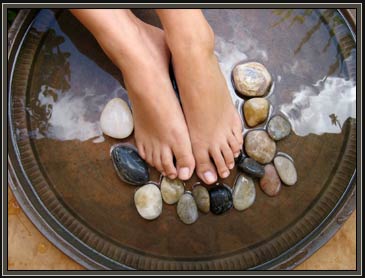Spring has officially arrived and although you may be eager for the first warm day to wear sandals or flip-flops, your feet may not be as enthusiastic about their looming reveal. After being cooped up in heavy socks and boots all winter, your feet need some extra care so that they look good and feel great! Today’s Skin School blog provides you with information about pedicures and how to prepare feet for the changing season.
 In recent years, there has been more focus placed on exercise and fitness. This means we are on our feet a lot more, which can lead to considerably more wear and tear on our feet. With that being said, feet need extra attention to treat problems such as bunions, corns and calluses.
In recent years, there has been more focus placed on exercise and fitness. This means we are on our feet a lot more, which can lead to considerably more wear and tear on our feet. With that being said, feet need extra attention to treat problems such as bunions, corns and calluses.
Pedicures are a good way to keep your feet healthy and looking good. A pedicure consists of soaking the feet, clipping and filing the nails, pushing the cuticles back, getting off the dead skin, applying lotion, and a deep intense massage.
Over time, feet can buildup dry, cracked skin, particularly on the heels. Exfoliation is essential during a pedicure because it gently removes these tough, dead skin cells to allow healthier skin to show through. Skin on the feet will be elastic, smoother and callous-free.
At Knoxville Dermatology Group, any one of our board certified physicians can provide you with general information regarding proper skin care for feet; however, we suggest you contact a podiatrist to answer specific questions you may have.
Schedule an appointment today with one of our board certified physicians to gain more knowledge about your skin so it can reach its fullest, healthiest potential!
Contact Knoxville Dermatology Group at 865.690.9467.




